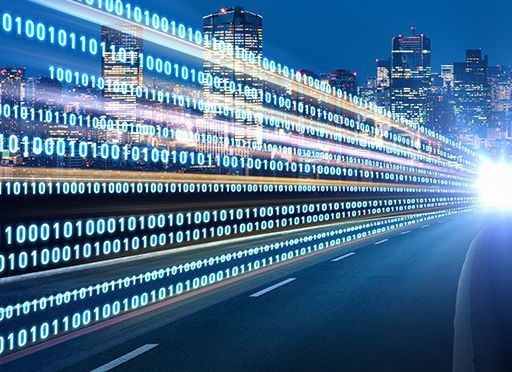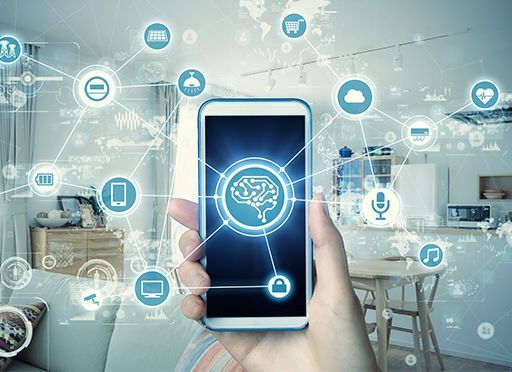Research scientist Andrew McAfee and management specialist Erik Brynjolfsson break down the technological movements that are creating the future today.

The Future, Now
Research scientist Andrew McAfee and management specialist Erik Brynjolfsson – co-directors of the MIT Initiative on the Digital Economy – are the only people named to both the Thinkers 50 list of the world’s top management thinkers and the Politico 50 list of people transforming American politics.
These best-selling authors and disruptive thinkers provide a detailed overview of how digital technologies are transforming business competition and reshaping the economy. McAfee and Brynjolfsson’s diffuse overview covers the evolution of machine learning, the advantages of data-driven over human decision-making and the economics of business in the age of intelligent machines.
Second Machine Age
In the early 20th century, manufacturing made the transition from steam power to electricity. The Industrial Revolution – the first machine age – transformed how factories functioned.
The second machine age evolved in two phases. The first phase of the digital transformation, McAfee and Brynjolfsson report, began in the late 1980s and solidified by the mid-1990s, with digital technologies taking over routine business tasks like payroll, issuing invoices and assembling auto parts.
The three lenses of machine, platform and crowd are based on sound principles of economics and other disciplines.Andrew McAfee and Erik Brynjolfsson
The second phase began around 2010. By then, machines no longer needed instructions from programmers. Instead, the authors explain, the machines could learn and solve problems on their own. By 2015, social media platforms such as Facebook were ubiquitous, and smartphones were the norm.
Now, the authors caution, the second machine age is moving forward so fast that no one has fully considered its effect on society.
Digital Platforms
By the 21st century, the work of successful companies like Uber and Airbnb required only a “thin layer” of ownership, in the words of strategist Tom Goodwin in 2015. These companies own digital applications and code, but little in the way of buildings and physical infrastructure.
However, McAfee and Brynjolfsson note, such firms and their industries function with substantially different structures than traditional industries. The three title concepts govern them: “machine, platform and crowd.” Intelligent machines are counterparts to the human mind. The counterpart to traditional companies is platforms like Airbnb and Uber, which are structured to offer goods, like accommodations, or services, like a ride across town. The counterpart of the crowd is the vast store of data and capacity that it makes possible.
After enough technical progress, enough experimentation and enough iteration…automated digital processes will become quite widespread. Andrew McAfee and Erik Brynjolfsson
Online-to-offline (O2O) platforms, again like Uber and Airbnb, bring the economics of networks into the physical world. They handle vast amounts of information about customers and, as demand for their services increases, costs don’t. Such O2O platforms, the authors explain, allow businesses to use mathematically sophisticated data-driven models to manage their revenue. For instance, Airbnb hosts can maximize their revenue during busy and slow periods. Uber provides drivers with maps that increase their likelihood of getting fares.
Numbers Not Judgment
Machines archive and transmit hard data while humans exercise judgment, make decisions and solve problems. The authors call this the “standard partnership” between people and machines.
Data-rich computer formulas now often lead to data-driven decisions with outcomes that perform at least as well as and often better than human experts’ assessments and decisions. Human minds are unreliable, and cognitive biases shape their processes, while computers are rigorously consistent.
The ultimate standard for adopting a decision-making system – whether based on machines, on humans or on some combination of the two – cannot realistically be perfectionAndrew McAfee and Erik Brynjolfsson
The authors advise companies to assign machines the jobs and decisions they perform best without human intervention. However, as McAfee and Brynjolfsson caution, all decision-making methods, whether executed by humans or machines, are liable to error.
Machine Learning
In the 1950s, researchers aspired to create machines that could think on their own. One approach set machines up with step-by-step rules that approximated the way a person learns a second language and recognizes statistical patterns. This rule-based approach provided elegant solutions to logical and mathematical equations, but it performed poorly at understanding and translating languages, and it failed at commonsense reasoning.
Understanding when, where, how and why these machines, platforms and crowds can be effective is the key to success in the economy today.Andrew McAfee and Erik Brynjolfsson
To teach machines a language and to improve their speech recognition, researchers exposed them to a plethora of examples. Machine learning has advanced as a result of big data and the available array of texts, images, videos and sounds. Today, scientists supply statistical models to machines that learn rules by themselves.
Virtual and Digital
Ordering a meal, purchasing groceries, checking baggage at an airport and banking traditionally involved personal interactions. These encounters are increasingly automated with digital interfaces. Human-to-human interactions are becoming “virtualized” as people interact with digital devices, like check-in kiosks at the airport.
Virtualization will replace many interactions that human beings now mediate. The authors discuss whether this enhances people’s lives or adds to their isolation.
For the first time in history, machines are learning to see and thereby gain the many benefits that come with vision.Andrew McAfee and Erik Brynjolfsson
Several ongoing developments are driving the explosion in robotics, including an increase in available big data, improved algorithms, faster wireless technologies, powerful computing infrastructure now in the cloud, and digital hardware that is growing exponentially more effective every year.
Companies
People now build complex, subtle digital networks that serve individuals and the collective. Technological progress supports such decentralization, but any notion of complete decentralization is unrealistic and utopian.
Human abilities, excellent goods and services, and strong organizational capabilities remain essential to business success.Andrew McAfee and Erik Brynjolfsson
In the first machine age, corporate executives enable collaborations and formulate visions and goals. A company’s owners retain rights of control and decision-making authority. Companies of the second machine age are more egalitarian. They maintain high levels of transparency and use data to drive their management decisions. The oft-maligned nine-to-five office culture will survive, though in what form? Given that this book emerged before the COVID-19 pandemic, you may wonder how the authors would view today’s extremely decentralized work environment and what it augurs for the future.
Arc
A work this dense featuring ideas and information both applicable to the world today and to the future invites lively debate. Some readers might find the authors’ historically informed balance of technological progress and economics – while often illuminating – confusing and even overwhelming. Their narrative tends to shift from place to place, moving, for example, from commentary on classical economists to discussions of the history of artificial intelligence. While McAfee and Brynjolfsson elide the question of human impact on the second machine age, they do a masterful job of illuminating the arc of technological history and its impact on society.
Erik Brynjolfsson and Andrew McAfee also co-authored The Second Machine Age and Race Against the Machine. Andrew McAfee also wrote More From Less and Enterprise 2.0.





